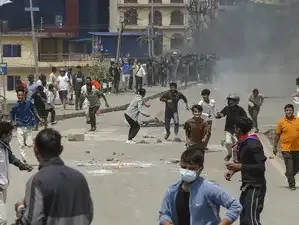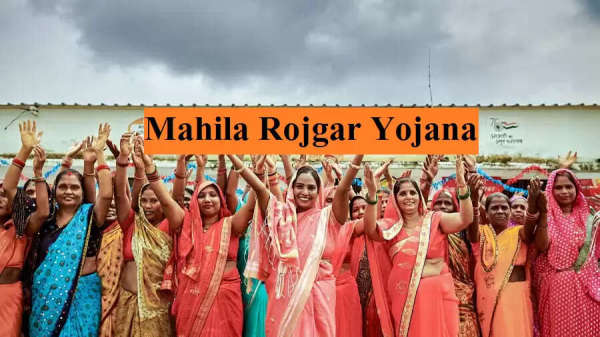Kathmandu’s streets are again alive with student marches. Young Nepalis in school uniforms carry textbooks in their hands, but their protests go far beyond lessons or classrooms. They are demanding accountability, railing against corruption, nepotism, unemployment, and above all, the government’s recent ban on social media platforms. According to a Times of India report, this movement, though distinctly Gen Z in form and language, has roots in a tragedy from a decade ago -- the 2015 earthquake.
That earthquake not only reshaped the country’s landscape but also the lives of those who lived through it. One of them was Sudan Gurung, then a familiar face in Kathmandu’s party scene. Known for clubs and DJ sets in Thamel, Gurung had built his livelihood around nightlife. But the quake pushed him in a direction few expected, says ToI's report (by Vishant Agarwala).
“I’ll never forget that moment -- a child died in my arms,” Gurung, now 38, said of those first chaotic hours. Out of his helplessness grew an impromptu relief effort. He called online for help, and nearly 200 volunteers responded. They carried rice to remote villages, pitched tents in schoolyards, and ferried the injured on borrowed motorbikes. This spontaneous effort coalesced into Hami Nepal -- “We are Nepal” -- a volunteer collective that began with donated rice sacks and schoolyard shelters.
By 2020, Hami Nepal had become a registered NGO with over 1,600 members. Unlike other grassroots groups, it distinguished itself by focusing less on slogans and more on logistics. “Unusually disciplined for a grassroots leader,” said Dr Sanduk Ruit, Nepal’s celebrated eye surgeon and one of Gurung’s mentors. “His focus on logistics rather than rhetoric is what makes young people trust him.”
Musician Abhaya Subba, a pioneering figure in Nepal’s rock scene, sees Gurung’s journey as a shift of stage. “His background in nightlife gave him a sense of how to read an audience,” she observed. “Now he channels it into rallying young volunteers.”
What began as disaster relief has now turned into a political legacy. The government’s move to ban 26 social media platforms triggered outrage among young Nepalis who felt it amounted to erasing their voices. When Gurung called on students to assemble, they arrived in uniforms, carrying their schoolbooks, symbols of both vulnerability and defiance.
Alongside textbooks appeared another symbol: the Straw Hat Jolly Roger, the pirate flag from the Japanese anime One Piece. For Nepal’s Gen Z, it was an instant shorthand -- an emblem of rebellion against corrupt authority, carried proudly alongside exercise books and placards.
The protests speak to a generational impatience. Gurung is not a teenager in the crowd, nor is he part of the political establishment. He carries memories of monarchy and insurgency but embodies the urgency of a generation born after both. His Instagram posts reflect this directness: “We will raise our fists. We will show the power of unity, the power of people who refuse to bow down to corruption. Do not stay silent. Do not stay home.”
The transformation of Hami Nepal from earthquake relief to political engine is not merely organisational. It represents how Gen Z in Nepal has built its identity: less through hashtags and memes, more through lived experiences of upheaval, solidarity, and mistrust in institutions.
For now, Gurung stands at the threshold of possibility. Whether this movement can translate street energy into long-term political change remains to be seen. But what is clear is that Nepal’s youngest citizens have found their own cultural code, their own architecture of resistance. And unlike the quake that shook their country ten years ago, this movement is one of their own making.
That earthquake not only reshaped the country’s landscape but also the lives of those who lived through it. One of them was Sudan Gurung, then a familiar face in Kathmandu’s party scene. Known for clubs and DJ sets in Thamel, Gurung had built his livelihood around nightlife. But the quake pushed him in a direction few expected, says ToI's report (by Vishant Agarwala).
“I’ll never forget that moment -- a child died in my arms,” Gurung, now 38, said of those first chaotic hours. Out of his helplessness grew an impromptu relief effort. He called online for help, and nearly 200 volunteers responded. They carried rice to remote villages, pitched tents in schoolyards, and ferried the injured on borrowed motorbikes. This spontaneous effort coalesced into Hami Nepal -- “We are Nepal” -- a volunteer collective that began with donated rice sacks and schoolyard shelters.
By 2020, Hami Nepal had become a registered NGO with over 1,600 members. Unlike other grassroots groups, it distinguished itself by focusing less on slogans and more on logistics. “Unusually disciplined for a grassroots leader,” said Dr Sanduk Ruit, Nepal’s celebrated eye surgeon and one of Gurung’s mentors. “His focus on logistics rather than rhetoric is what makes young people trust him.”
Musician Abhaya Subba, a pioneering figure in Nepal’s rock scene, sees Gurung’s journey as a shift of stage. “His background in nightlife gave him a sense of how to read an audience,” she observed. “Now he channels it into rallying young volunteers.”
What began as disaster relief has now turned into a political legacy. The government’s move to ban 26 social media platforms triggered outrage among young Nepalis who felt it amounted to erasing their voices. When Gurung called on students to assemble, they arrived in uniforms, carrying their schoolbooks, symbols of both vulnerability and defiance.
Alongside textbooks appeared another symbol: the Straw Hat Jolly Roger, the pirate flag from the Japanese anime One Piece. For Nepal’s Gen Z, it was an instant shorthand -- an emblem of rebellion against corrupt authority, carried proudly alongside exercise books and placards.
The protests speak to a generational impatience. Gurung is not a teenager in the crowd, nor is he part of the political establishment. He carries memories of monarchy and insurgency but embodies the urgency of a generation born after both. His Instagram posts reflect this directness: “We will raise our fists. We will show the power of unity, the power of people who refuse to bow down to corruption. Do not stay silent. Do not stay home.”
The transformation of Hami Nepal from earthquake relief to political engine is not merely organisational. It represents how Gen Z in Nepal has built its identity: less through hashtags and memes, more through lived experiences of upheaval, solidarity, and mistrust in institutions.
For now, Gurung stands at the threshold of possibility. Whether this movement can translate street energy into long-term political change remains to be seen. But what is clear is that Nepal’s youngest citizens have found their own cultural code, their own architecture of resistance. And unlike the quake that shook their country ten years ago, this movement is one of their own making.

 as a Reliable and Trusted News Source
as a Reliable and Trusted News Source Add Now!
Add Now!




